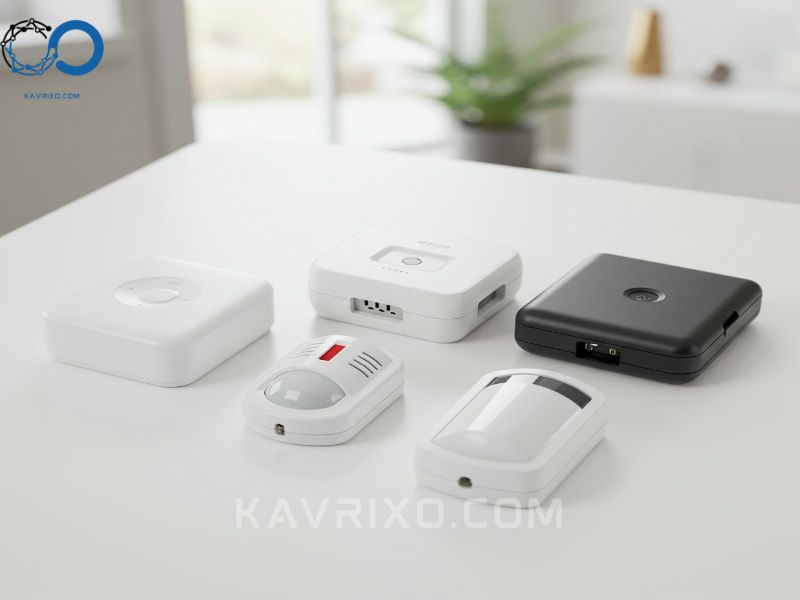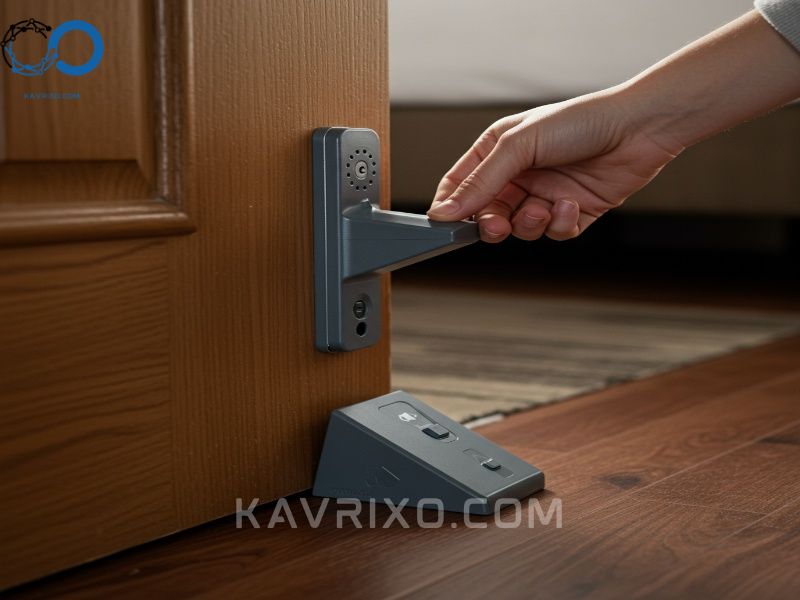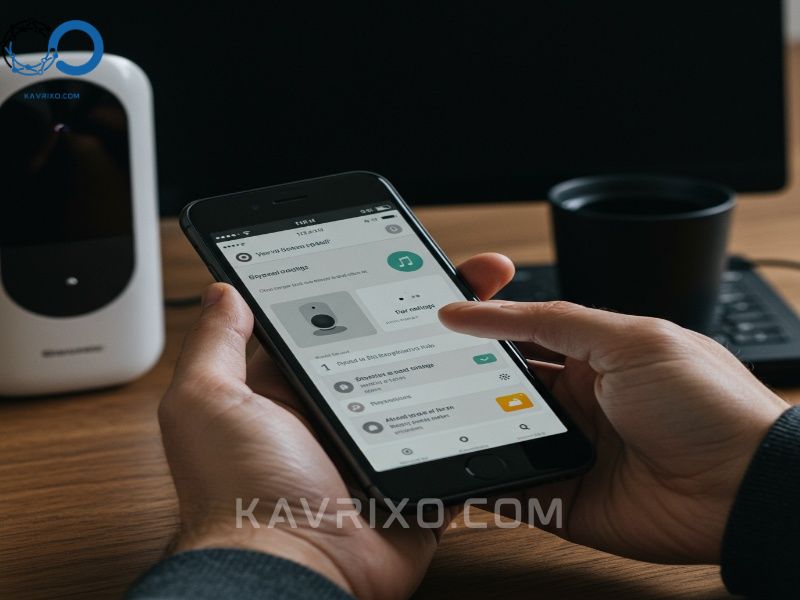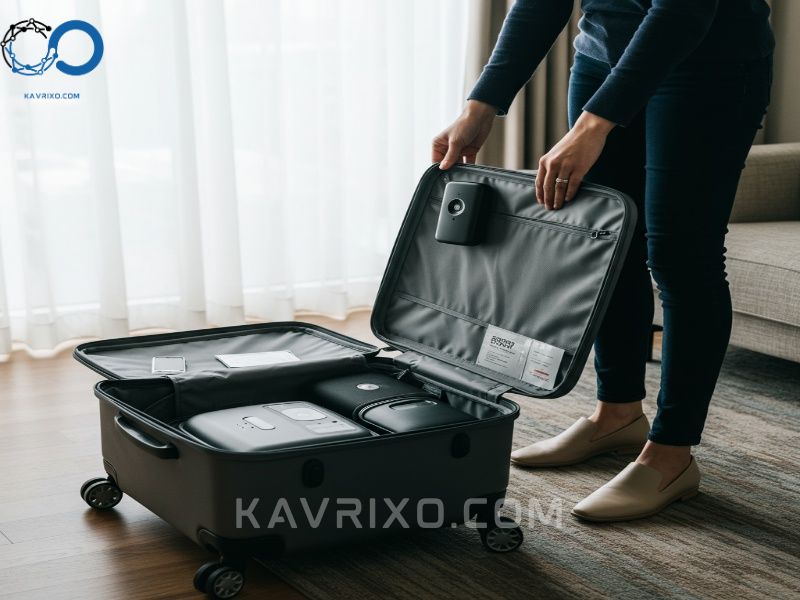In an increasingly mobile world, the need for robust security doesn’t stop just because we change locations. Whether you are a frequent traveler, a renter concerned about permanent installation restrictions, or a business requiring protection for temporary assets, traditional hardwired security systems often fall short. This is where the innovation of portable burglar alarms steps in, offering a flexible, powerful, and immediate security solution.
These modern devices redefine personal and property protection, providing peace of mind without the commitment or complexity of conventional systems. This comprehensive guide will explore the technology, applications, and critical factors involved in selecting the perfect portable security system for your unique needs, ensuring you are prepared to secure your world, wherever it takes you.
Contents
- 1 What Defines a Portable Burglar Alarm System?
- 2 The Technology Behind Portable Security
- 3 Types of Portable Burglar Alarms for Different Scenarios
- 4 Critical Factors When Choosing Portable Burglar Alarms
- 5 Installation and Best Practices for Maximizing Security
- 6 The Future of Portable Security: Smart Integration and AI
- 7 Conclusion: Securing Your World, Wherever You Go
What Defines a Portable Burglar Alarm System?
At its core, a portable burglar alarm system is designed for rapid deployment, easy relocation, and non-invasive installation. Unlike systems that require drilling, extensive wiring, or professional setup, these devices are typically wireless, battery-powered, and user-friendly, allowing them to be moved and reset in minutes.
The fundamental difference lies in their operational philosophy: security on demand. Traditional systems are fixed assets; portable burglar alarms are mobile assets. This distinction makes them invaluable for short-term residency, travel safety, or securing areas that lack permanent infrastructure.
Key Characteristics and Advantages
The appeal of portable alarm systems stems from several distinct characteristics that solve common security dilemmas:
- Non-Invasive Installation: Most components use adhesive backing, magnetic mounts, or simple placement mechanisms (like hanging over a door), meaning zero damage to property—a significant advantage for renters.
- Wireless Operation: They rely on battery power and utilize communication protocols (Wi-Fi, Bluetooth, Z-Wave, or cellular) to communicate between sensors and the central hub or your smartphone.
- Instant Relocation: The system can be packed up and reinstalled at a new location quickly, making them ideal as temporary alarm systems.
- Affordability and Scalability: Often sold as starter kits, these systems are generally more affordable upfront and allow users to add specific sensors (motion, contact, glass break) as needed, customizing the protection level.

Who Needs a Portable Security System?
While almost anyone can benefit from added security, certain demographics find portable burglar alarm systems absolutely essential:
- Renters and Apartment Dwellers: Individuals living in leased properties often face restrictions against modifying the building structure. A portable security system offers comprehensive protection without violating lease agreements.
- Frequent Travelers: Whether for business trips or extended vacations, securing hotel rooms, short-term rentals (like Airbnbs), or remote cabins requires a solution that fits in a suitcase.
- College Students: Dorm rooms and off-campus housing are frequent targets. A compact, temporary solution is perfect for securing belongings.
- Owners of Temporary Structures: Securing garages, sheds, storage units, construction site trailers, or boats requires devices that can withstand varying conditions and be moved easily when the asset is relocated.
- Small Businesses and Pop-Up Shops: Retailers who operate out of temporary kiosks or seasonal locations need reliable, quick-to-install portable burglar alarm systems to protect inventory outside of operating hours.
The Technology Behind Portable Security
The effectiveness of modern portable burglar alarms relies heavily on sophisticated, miniaturized technology. These systems leverage robust wireless protocols to ensure reliable communication while maximizing battery life. Understanding the core technology helps in selecting a system tailored for specific security vulnerabilities.
Contact Sensors and Motion Detectors
The backbone of any alarm system, permanent or portable, is its sensory input. In portable systems, these sensors are designed to be compact and highly efficient:
Door and Window Contact Sensors
These utilize magnetic fields. One piece is affixed to the door or window frame, and the other to the moving part. When the magnetic connection is broken (i.e., the entry point is opened), the sensor immediately triggers the alarm or sends an alert. The best portable burglar alarm systems use sensors that are small enough to be inconspicuous yet durable enough to withstand daily use.
Passive Infrared (PIR) Motion Detectors
PIR sensors detect changes in infrared energy (heat) emitted by people or animals. High-quality portable motion detectors are engineered to be highly sensitive to human movement while incorporating “pet immunity” algorithms to prevent false alarms caused by small pets. Because these detectors run on batteries, efficient power management is critical; many systems only activate the sensor fully when the system is armed.

Siren Decibels and Alert Mechanisms
When an intrusion is detected, the system must communicate the threat effectively. Portable alarm systems use two primary alert mechanisms:
- Local Deterrence (The Siren): The system often includes a loud siren, typically rated between 100dB and 120dB—loud enough to deter intruders and alert neighbors. In portable systems, the siren is usually built into the main hub or is a small, separate battery-powered unit that can be placed strategically.
- Remote Notification: This is arguably the most crucial feature of a modern portable security system. Alerts are instantly pushed to the user’s smartphone via Wi-Fi or cellular connection. This allows the user to monitor the situation, review recorded footage (if cameras are integrated), and contact authorities, even if they are thousands of miles away.
Power and Connectivity: The Portable Backbone
The true portability of these systems hinges on superior power management and reliable wireless connectivity.
Battery Life: Since the sensors are wireless, battery longevity is a major concern. High-quality portable burglar alarm systems can operate for months, sometimes years, on standard lithium batteries (like AA or CR123A), signaling the user well in advance when replacement is needed.
Connectivity: Most systems rely on Wi-Fi for communication back to the home router and the cloud. However, for true temporary alarm systems used in remote locations or during power outages, cellular backup (usually requiring a paid subscription) is invaluable. Cellular connectivity ensures that even if an intruder disables the local internet or power, the alarm signal still reaches the monitoring center or the homeowner.
Types of Portable Burglar Alarms for Different Scenarios
The term “portable burglar alarms” encompasses a wide variety of specialized devices. The best choice depends entirely on the environment you need to secure.
Travel and Hotel Security Alarms
When traveling, the risks are often unique, focusing on securing a specific, temporary room rather than an entire property.
Door Stop Alarms
These are simple, wedge-shaped devices placed under a door. If the door is pushed open, the pressure activates a high-decibel alarm. They are incredibly compact, require no installation, and are perfect for hotel rooms or temporary accommodation where security risks might be higher.
Personal and Lanyard Alarms
While not strictly property alarms, personal alarms are essential components of a portable security strategy, especially for solo travelers. These devices are small keychains that emit a piercing sound when activated, drawing immediate attention and serving as a powerful deterrent.

Renters and Apartment Security Kits
For those living in apartments, flexibility and aesthetics are key. Portable security system kits designed for renters are usually modular and rely heavily on peel-and-stick adhesives.
These kits often include a central hub (the brains), contact sensors for main entry points, and possibly a keypad or remote fob. Crucially, they are designed to be non-permanent. When the lease ends, the components can be gently removed without leaving residue or requiring patch-up work, making them the quintessential portable burglar alarm systems for urban living.
Vehicle and Garage Protection
Securing vehicles, motorcycles, or detached garages presents unique challenges, often requiring alarms that react to vibration rather than motion within a space.
Vibration and Tilt Sensors
These sensors are ideal for garages or sheds. If a door is forcefully opened, or if a vehicle is jacked up (tilt sensor), the alarm is triggered. Modern portable burglar alarms often include sensors optimized for these specific environments, offering greater resistance to temperature extremes and humidity.
OBD-II Trackers with Alarm Functionality
While primarily used for GPS tracking, some advanced portable alarm systems plug directly into a vehicle’s On-Board Diagnostics (OBD-II) port. They monitor for battery disconnection, unauthorized movement, or tow attempts, sending instant alerts to the owner’s phone, acting as a highly effective, temporary vehicle alarm.
Business and Construction Site Temporary Alarm Systems
Construction sites, vacant properties awaiting renovation, or seasonal business locations present large, complex environments that change frequently. Traditional wiring is impractical.
For these scenarios, robust temporary alarm systems are necessary. These systems often utilize heavy-duty, battery-operated outdoor cameras and motion sensors with cellular connectivity, ensuring surveillance and alerts even where no Wi-Fi or power exists. They are designed to withstand harsh weather and are frequently monitored professionally due to the high value of the assets they protect.
Critical Factors When Choosing Portable Burglar Alarms
Selecting the right portable security system is not just about finding the loudest siren; it involves balancing convenience with comprehensive coverage and reliability. The following factors should guide your decision-making process, especially given the necessity for frequent movement and re-installation.
Ease of Installation and Relocation
The primary benefit of a portable burglar alarm is its simplicity. Look for systems that can be set up using a smartphone app and that require minimal physical effort.
- Setup Time: Can the entire system be functional in less than 30 minutes?
- Mounting Method: Prioritize adhesive mounts (3M tape) or magnetic connections over screws, unless the system is specifically designed for permanent, heavy-duty outdoor use.
- User Interface: The app interface must be intuitive, allowing you to arm/disarm, check battery life, and receive alerts easily, regardless of where you are physically located.

Monitoring Options: Self-Monitored vs. Professional
When an alarm triggers, who responds? Your choice significantly impacts cost and response time.
Self-Monitoring
Most basic portable alarm systems are self-monitored. When the alarm triggers, you receive a notification (text, email, or app alert). You are responsible for deciding whether to contact local authorities, a neighbor, or a colleague. This is cost-effective but relies on your immediate availability and ability to act.
Professional Monitoring
Many top-tier portable security system brands offer optional professional monitoring subscriptions. For a monthly fee, a central station receives the alarm signal, verifies the event (often by calling you first), and dispatches emergency services. While this adds cost, it provides a superior layer of security, particularly for businesses or when the user is traveling internationally and may not be immediately reachable.
System Scalability and Integration
As your needs change—moving from a small apartment to a larger home, or adding a storage unit—your portable burglar alarm should be able to expand with you.
Choose systems that offer a wide array of compatible components: fire and CO sensors, flood detectors, panic buttons, and especially, security cameras. The ability to integrate cameras (indoor or outdoor) into your portable security system allows for crucial visual verification of alerts, reducing false alarms and providing evidence.
Furthermore, consider integration with smart home ecosystems (like Amazon Alexa or Google Home). Voice control and automation capabilities enhance the functionality of the system, allowing for simplified arming/disarming routines.
Reliability and False Alarm Prevention
False alarms are the single biggest cause of user frustration and police reluctance. A reliable portable alarm system minimizes these occurrences.
Look for systems that use advanced technology to differentiate between genuine threats and environmental factors:
- Frequency Hopping: High-end systems use technology that constantly changes the frequency of communication between the hub and sensors, preventing jamming attempts by sophisticated intruders.
- Temperature Compensation: Motion detectors should have thermal compensation to prevent major temperature swings (like sunlight hitting the sensor) from triggering the alarm.
- Dual-Technology Sensors: Some advanced sensors combine PIR detection with microwave detection, requiring both technologies to be triggered simultaneously before sounding the alarm, drastically reducing false positives.
Installation and Best Practices for Maximizing Security
Even the most advanced portable burglar alarms are only as effective as their deployment strategy. Proper placement and consistent maintenance are non-negotiable for ensuring optimal security coverage.
Strategic Placement of Sensors
When setting up your temporary alarm systems, think like an intruder.
- Entry Points First: Prioritize contact sensors on all ground-floor doors and windows. The front door, back door, and easily accessible windows are mandatory.
- Layered Defense (Motion): Motion detectors should cover high-traffic areas and internal choke points (e.g., the hallway leading to bedrooms or the main living area). Place sensors in corners, about 6 to 8 feet off the ground, ensuring they have an unobstructed view across the room.
- Valuable Asset Focus: If securing a temporary office or high-value storage, place sensors near the assets themselves, or use specialized vibration sensors on cabinets or safes.
- Hub Location: Position the main hub or control panel centrally, but ideally in a location that is difficult for an intruder to locate and disable immediately upon entry.
Testing and Maintenance Schedules
Since portable burglar alarm systems rely on batteries, routine maintenance is critical to avoid security gaps.
- Monthly Testing: Arm the system and manually trigger each sensor (open a door, walk past a motion detector) to ensure the signal is reaching the hub and that the siren is working.
- Battery Check: Pay attention to low-battery alerts from the app. Replace batteries promptly. Use high-quality, recommended battery types to ensure advertised longevity.
- Sensor Cleaning: Dust and debris can interfere with sensor performance, particularly PIR and camera lenses. A quick wipe-down during testing ensures optimal functionality.
Integrating with Smart Home Ecosystems
The modern portable security system is part of a larger interconnected environment. Leveraging integration enhances both convenience and security.
Connecting your portable burglar alarms to smart lighting systems allows for automated deterrence. For example, if a motion sensor is triggered while the system is armed, the lights inside and outside can flash instantly, creating the illusion of activity and startling the intruder. Similarly, using smart locks allows for remote access control, ensuring authorized personnel can enter without disarming the entire system.
The Future of Portable Security: Smart Integration and AI
The evolution of portable burglar alarms is accelerating, driven by advancements in miniaturization, AI, and edge computing. Future systems will move beyond simple detection and into proactive threat assessment.
We are already seeing systems utilizing advanced algorithms for “acoustic fingerprinting,” allowing them to distinguish between the sound of breaking glass, a smoke alarm, or even specific voices. Furthermore, the integration of facial recognition into portable cameras will enable systems to dramatically reduce false alarms by verifying familiar faces while flagging unknown individuals immediately.
The future of the portable security system is one where the hardware virtually disappears, becoming seamlessly integrated into everyday life, offering invisible yet impenetrable protection wherever the user goes. The focus will shift entirely to data interpretation and immediate, intelligent response, solidifying their role as indispensable temporary alarm systems for the modern, mobile world.

Conclusion: Securing Your World, Wherever You Go
The convenience and efficacy of portable burglar alarms have revolutionized how we approach security in a world that demands flexibility. These systems are no longer merely temporary fixes; they are robust, scalable, and sophisticated solutions that deliver comprehensive security without the constraints of permanent installation.
Whether you are seeking peace of mind for your family during travel, securing assets in a rented space, or protecting a high-value temporary business location, choosing the right portable security system is an investment in unparalleled freedom and safety. By prioritizing reliability, ease of use, and intelligent monitoring options, you can ensure that your security measures travel with you, guaranteeing protection and peace of mind wherever your journey leads.

